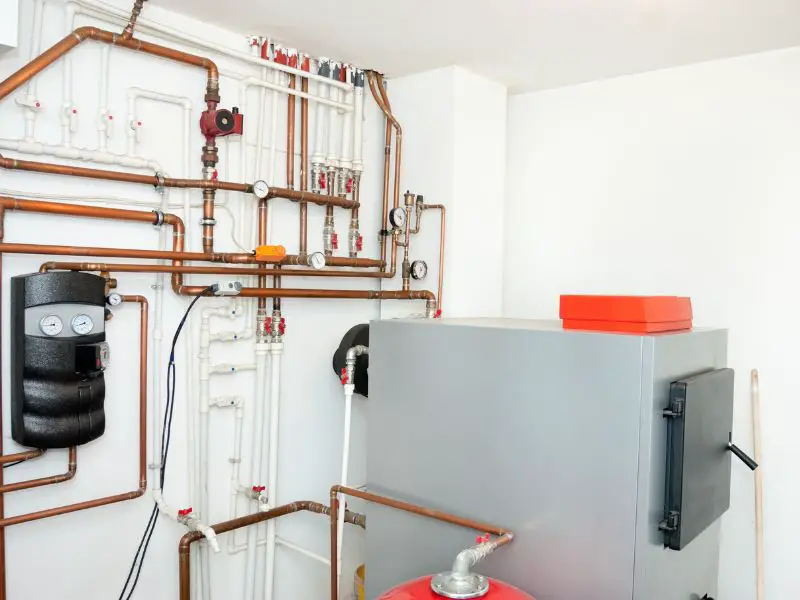As the weather in the UK becomes colder, the importance of having a well-functioning heating system in your home or business becomes paramount. A properly functioning heating system can help keep you warm, save you money on energy bills, and increase the overall comfort of your property.
For this reason, you should also consider installing water heaters or boilers in your tiny home. The heater should ensure that you don’t end up freezing up all your water reserves. And, of course, you can use your resources when you need to. However, even the water heater can break down. If your water heater is making noise, make sure to call adequate servicer to take care of it.
In this blog post, we will take an inside look at the essential parts of a furnace and how they work together to maximize efficiency.

Introduction to the Parts of a Furnace
A furnace is a type of heating system that burns fuel to produce heat. The heat is then distributed throughout the building by a system of ducts and vents. The following are the key parts of a furnace that play a crucial role in maximizing efficiency.
Burner Assembly
The burner assembly is where the fuel is burned to produce heat. It is made up of a fuel nozzle, an ignition system, and a flame sensor. The fuel nozzle is responsible for delivering the correct amount of fuel to the burner, while the ignition system ensures that the fuel is ignited in a safe and controlled manner. The flame sensor is responsible for monitoring the flame and shutting down the furnace in case of an emergency.
Heat Exchanger
The heat exchanger is a crucial part of the furnace, as it is responsible for transferring heat from the furnace to the air that is being circulated throughout the building. The heat exchanger is made up of a series of metal tubes that run through the furnace. The hot gases produced by the burner assembly flow through these tubes, heating up the air that is circulating around them.
Blower Motor
The blower motor is responsible for circulating the heated air throughout the building. It is located near the heat exchanger and is powered by electricity. The blower motor works by blowing the hot air from the heat exchanger through the ducts and vents and into the rooms of the building.
Ducts and Vents
The ducts and vents are responsible for distributing the hot air throughout the building. The ducts are the tubes that run through the walls, floors, and ceilings, while the vents are the openings in the walls and floors through which the hot air is released.
Thermostat
The thermostat is responsible for regulating the temperature in the building. It works by monitoring the temperature of the air and turning the furnace on and off as needed to maintain the desired temperature. The thermostat can be programmed to maintain different temperatures at different times of the day, ensuring that the heating system is only running when it is needed.
Maximizing Efficiency: Tips and Tricks
The following are some tips and tricks for maximizing the efficiency of your heating system:
Related Posts
None found
Regular Maintenance
One of the most important things you can do to maximize the efficiency of your heating system is to have it regularly maintained. A professional heating technician can inspect the system, clean and repair any parts that need it, and ensure that everything is working as it should.
Program the Thermostat
Programming the thermostat to turn off when you are not at home or when the temperature is warm enough can help save you money on your energy bills. You can also set the thermostat to a lower temperature at night when you are sleeping, as you are likely to be under a blanket and will not notice a small drop in temperature.
Seal Ducts and Vents
Sealing your ducts and vents can help prevent hot air from escaping and reduce the amount of energy your heating system uses. You can have a professional heating technician inspect your ducts and vents for leaks and make any necessary repairs.
Upgrade to a High-Efficiency Furnace
If your furnace is more than 10 years old, you may want to consider upgrading to a high-efficiency furnace. These furnaces are designed to use less fuel and produce more heat, which can save you money on your energy bills and reduce your carbon footprint.
Conclusion
In conclusion, understanding the essential parts of your heating system and how they work together is key to maximizing efficiency. By following the tips and tricks, you can ensure that your heating system is working at its best and keeping you warm and comfortable all winter long.
Regular maintenance, programming the thermostat, sealing ducts and vents, and upgrading to a high-efficiency furnace are all great ways to improve the efficiency of your heating system. If you have any concerns about your heating system, be sure to contact a professional heating technician for assistance.
